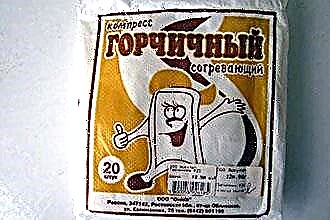Physical activity with arrhythmias is necessary to increase the endurance of the circulatory system. A correctly selected set of exercises with an optimal level of activity normalizes hemodynamics, increases the functional reserve of the body. Stretching exercises increase mental performance. Respiratory gymnastics with atrial fibrillation in combination with medical help tidies up the general condition and reduces the severity of clinical signs.
Is exercise effective for cardiac arrhythmias?
Dosed physical activity, taking into account human abilities, health pathologies and additional parameters, improve metabolism, accelerate blood flow and restore functions in the affected organs. The scheme and the number of sessions for each disease are developed and monitored by a cardiologist and a specialist in exercise therapy.
Acceptable activities for arrhythmias:
- qigong is an ancient Chinese martial art with a concentration of internal energy;
- swimming;
- walking;
- yoga;
- Pilates is a set of exercises for the development of all muscle groups.
The patient is persuaded not to prescribe training for himself, not to practice unfamiliar movements, as this threatens the development of complications. Any physical activity with atrial fibrillation, frequent attacks of tachycardia and circulatory disorders in the brain unacceptable!
The following sports are prohibited:
- Weightlifting;
- bodybuilding (especially with the use of anabolic steroids);
- breath holding exercises;
- the use of an expander;
- skipping rope;
- running at speed;
- contact martial arts;
- diving.
These sports cause an increased load on the heart muscle, which leads to a breakdown of the body's compensatory capabilities and the development of complications.
Stretching exercises
Stretching (stretching) and some yoga asanas are designed to make the body more flexible, relax muscles and improve blood circulation. Warm up before exercising (with a warm shower). Exercises are done smoothly, avoiding sharp dynamics.
When performing, patients adhere to the following rules:
- do at least an hour and a half after eating;
- with pain in the heart, shortness of breath, dizziness, classes immediately stop and take validol or nitroglycerin;
- control the pulse.
The complex is performed while standing and sitting in such a sequence to restore correct breathing in case of cardiac arrhythmias:
- the hand is lowered along the body, the other pull the head to the shoulder, repeat on each side;
- feet shoulder-width apart, one arm at the waist, the other raised, tilt the body to the side behind the arm;
- make ten springy bends to each leg in turn;
- sit with legs wide apart, tilt the body anteriorly to each leg in turn.
Exercises for physiotherapy exercises in the illustration below:
Breathing exercises
Often the recommended exercise is correct breathing for cardiac arrhythmias. During exercise, the heart rate is normalized and the blood pressure level is stabilized.
The sequence of exercises while standing:
- Eight steps. When inhaling, take one step.
- Six fists. While inhaling, we squeeze the lowered hands, while exhaling, we relax.
- Twelve emissions. Hands at the waist. On inhalation, we lower them, with force unclenching our fingers, on exhalation, we take the starting position.
- Thirteen slopes. Inhaling, we bend down, spreading our arms to the sides, while exhaling we straighten ourselves, hands on the belt.
Arrhythmia after exercise: what to do?
A similar condition occurs in 19-60% of cases of uncontrolled activities. The likelihood of occurrence increases in proportion to age: in persons over fifty years of age, it occurs in half of the episodes. Stress-induced ventricular rhythm disturbances are manifested in IHD in 36-50% in the form of extrasystoles (PVC), tachycardia (VT), fibrillation (VF).
The most common disorders after exercise are sinus arrhythmias (respiratory) or atrial fibrillation.
The comparative frequency of occurrence of violations is presented in the table:
| All types of PVC,% | Frequent PVCs,% | LE of high grades (pairs, triplets, VT, VF),% | |
|---|---|---|---|
| Healthy people | 19-38 | 3-11 | 2-6 |
| Patients with ischemic heart disease | 38-50 | 23-37 | 6-15 |
The patient is worried about:
- confusion of consciousness;
- dizziness;
- dyspnea;
- chest discomfort or pain.
It is necessary to immediately stop the training, to provide a semi-sitting position of the patient and access to fresh air, give him forty drops of Corvalol (Valoserdin, Valocordin) to drink, washed down with water.
In the near future, after the attack, they plan to visit a doctor for the purpose of examination and prescribing treatment.
Prevention of complications
- aerobic exercise takes no more than two hours a week;
- uniform loads every day;
- rest after intense exercise;
- before the increase in dynamics, the muscles are warmed up.
Conclusions
Adequate physical activity is indicated for almost all patients with rhythm disturbances during the absence of an attack. The main thing is to select it together with a cardiologist during functional stress tests. The required level of energy consumption is calculated by the formula depending on the maximum heart rate: the age of the person must be subtracted from two hundred and twenty. 75% of this value is a frequency that should not be exceeded during training. A competent approach to physical education significantly improves the patient's quality of life.



